The military use of shotguns has always fascinated me. I love shotguns, like an absolute ton.
I shoot clays with a shotgun, I hunt with a shotgun, and I trust a shotgun for home defense. As a Marine, I was even issued a Mossberg due to my skill and experience with these firearms.
The combat shotgun has always been a part of America’s arsenal, and today we are going to look at a brief history of the combat shotgun.
Sure, the rifle rules, but throughout history, Americans have embraced the shotgun more than any other country. So if the article seems American-centric, it’s because that’s where a lot of the history is.
Table of Contents
Loading…
The Very Beginning
Firearms that fire a load of shot have been around since the earliest guns, but the most notable dedicated shotgun came in the form of the blunderbuss.
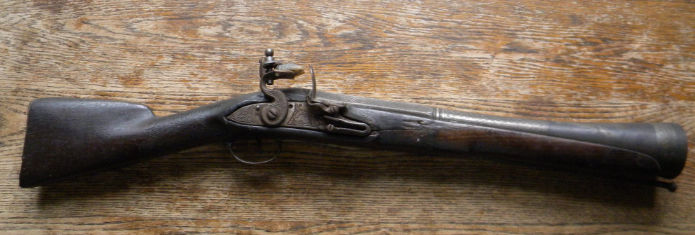
The blunderbuss was a smoothbore muzzleloading firearm with a massive bore. With it, the user could shove a variety of different-sized shot into these weapons or just about whatever they wanted.
Blunderbusses came in both long and short sizes, with the ‘handgun’ form being called the dragon, which later evolved into the dragoon.
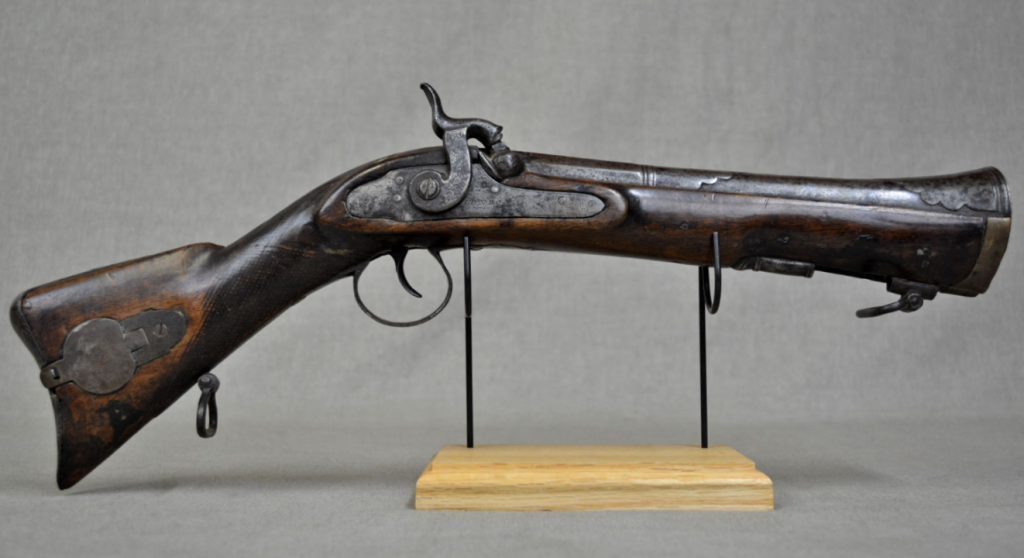
These guns came from the Dutch, and the word blunderbuss comes from the Dutch word donberbus, which combines thunder (donder) with pipe (bus).
Thunderpipe is what I will be calling all of my shotguns from now on.
Like shotguns, these guns had a large bore and limited range. They were adopted by several military forces and used extensively by police and military forces. British mailmen carried a blunderbuss and a pair of pistols, Portuguese Marines carried them, and they were common with pirates, sailors, and even cavalrymen.
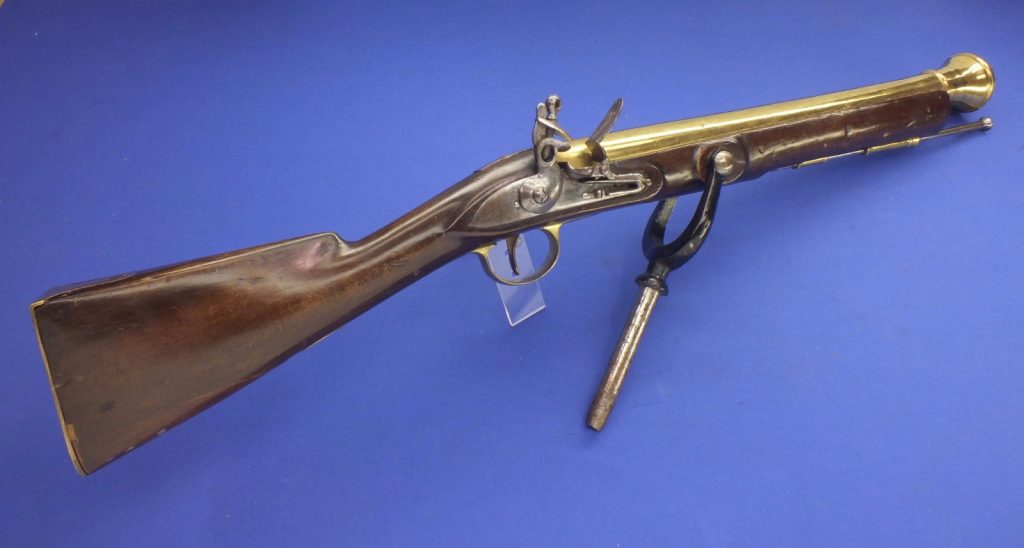
They offered quick and decisive close-range firepower.
Perfect for boarding ships and fending off highwaymen. Imagine riding a horse and trying to hit an enemy trying to kill you. Would a single ball be easier, or a mass of them be fired with a significant spread?
The American Revolution
The blunderbuss was never superbly popular with Americans.
Pilgrims being armed with the blunderbuss at Plymouth rock seems to be more fiction than fact. Coming into the American Revolution, the Americans were armed with more traditional muskets.
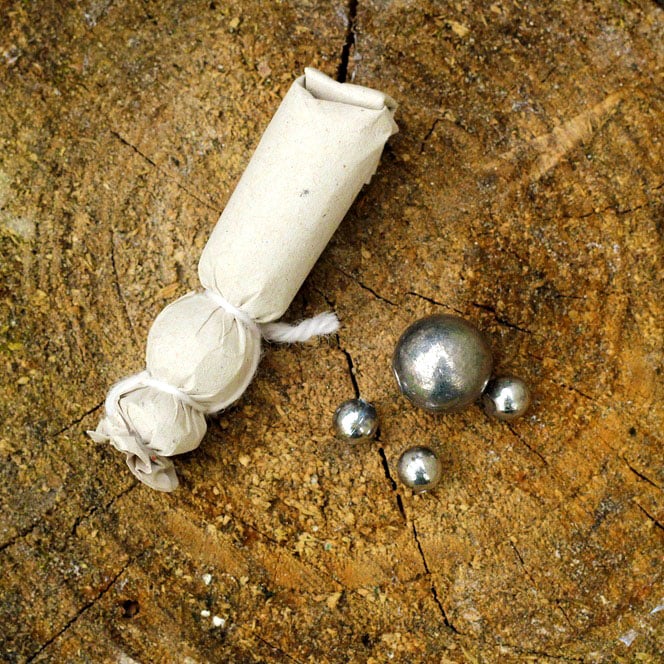
These smoothbore long arms were not known for their accuracy. Colonial American soldiers recognized this and began using a special load called “buck and ball.” Soldiers would pack a normal musket ball but would also add a small load of buckshot pellets.
These buckshot pellets, followed by the musket round, improved the chance of scoring a hit on enemy soldiers.
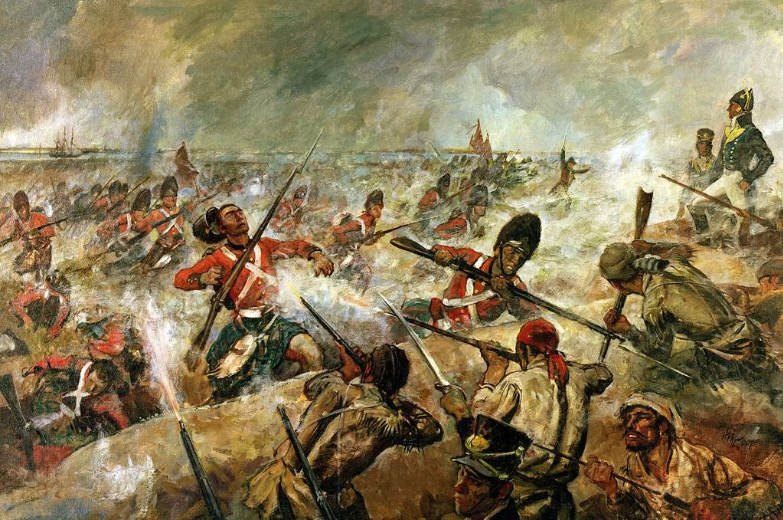
In the Battle Of New Orleans, the buck and ball proved its merit. 5,700 Americans faced 8,000 British and routed them. The Americans suffered 62 casualties, and the British suffered 2,034.
Into the Civil War
The American Civil War saw the rapid rise of small arms technology, including metallic cartridges. But at the beginning of the war, the famed buck and ball loads were still being heavily used.
The South, in particular, utilized shotguns extensively, especially with their cavalry forces.

Shotguns at the time were muzzleloading designs and often featured shorter barrels to make them lighter and easier to handle, especially on horseback.
The Confederates also lacked the production capacity of the North, and this forced them to utilize common hunting implements in war.
During the Civil War, metallic cartridges, including brass-cased shotgun shells and repeating rifles, came to be. Like every other firearm, the brass-cased shells improved reliability and reloading speed.
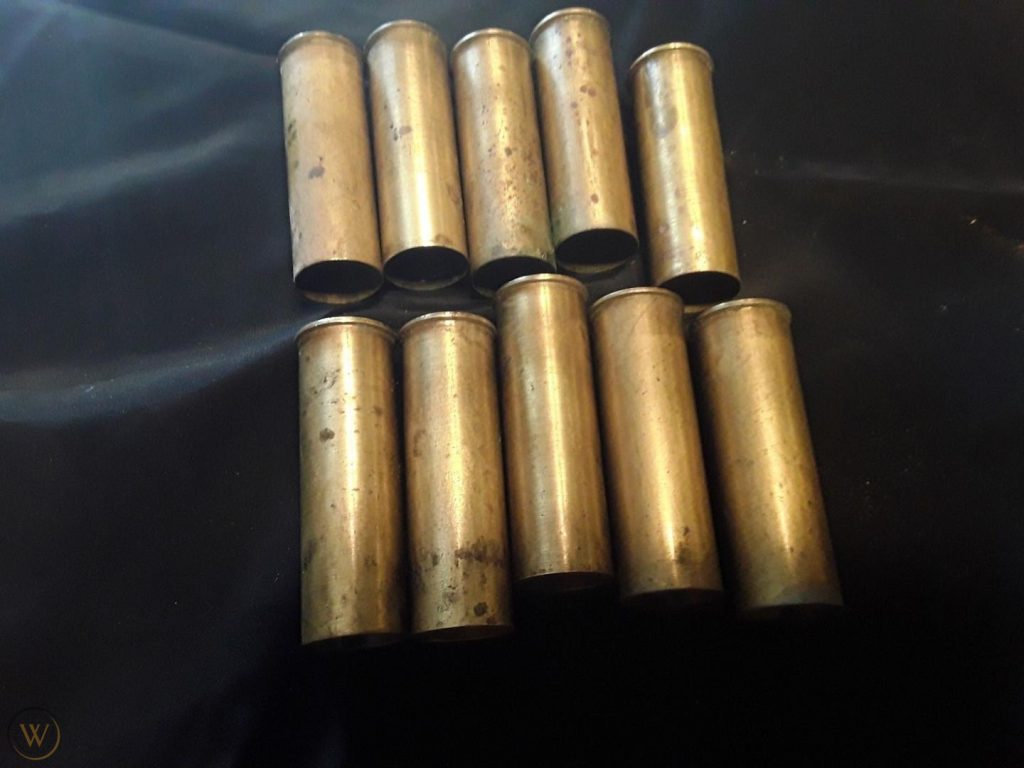
However, the closest shotguns got to being repeaters at the time were double-barrel guns, also known as coach guns. These shorter barrel shotguns were known for being quite powerful and effective for quick engagements.
In the 1870s, paper shells were introduced.
These water-resistant paper shells lowered the price of shotgun shells significantly and were easier to manufacture than brass shells. However, they could not be easily reloaded.
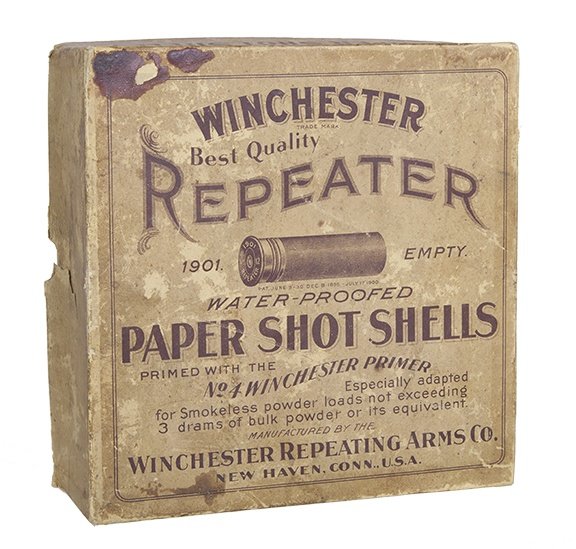
Paper shells became the standard for decades. In fact, they lasted into the 1960s until plastic hulls made an appearance.
The Adoption of Repeating Shotguns
In the late 1800s, John Moses Browning decided shotguns needed an overhaul. Like most things he attempted, he succeeded.
Browning wanted a slide action shotgun, but Winchester was a lever gun company and wanted a lever action.

To appease them, he produced the Winchester 1887, a lever-action, repeating shotgun.
It was the first successful repeating shotgun. It contained 5+1 rounds of 12-gauge, making it quite the beast at the time.
The Rise of the Pump-Action
Winchester finally relented and let Browning build the Model 1893 slide-action shotgun, which we call a pump-action these days.
The 1887 was a big clumsy gun that was needlessly complicated, and 1893 showed that the slide action was the superior choice.
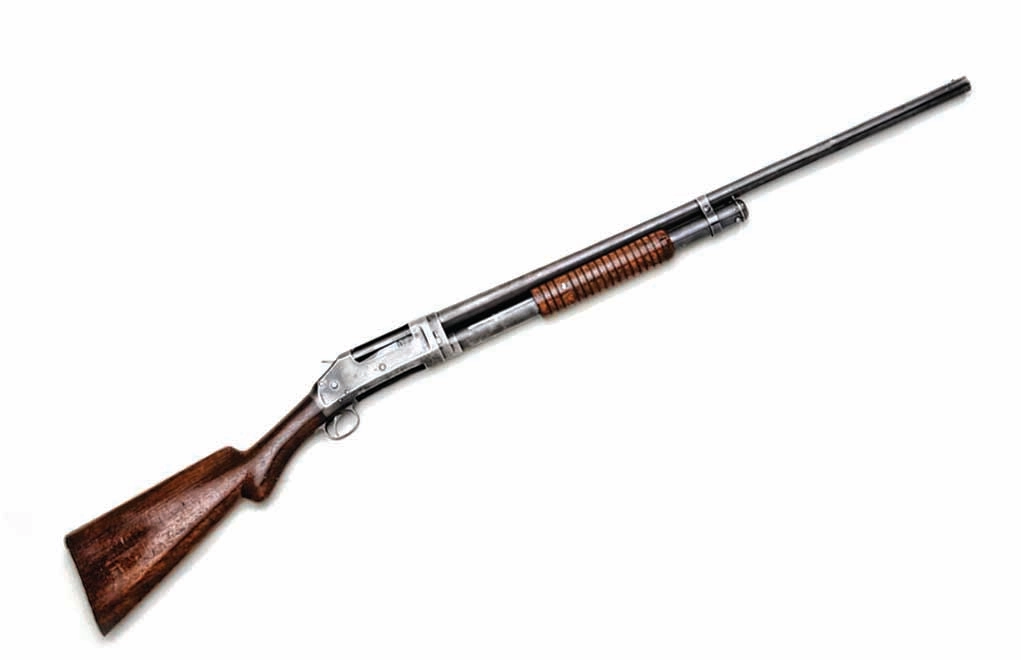
The 1893 worked, but improvements in 1897 made the weapon more durable, ergonomic and could use both 2 3/4 and 2 5/8 inch loads.
As most gun nerds know, the M1897 became a legend among combat shotguns. While it’s most known for its World War 1 appearance, the gun gained fame well before that.
Quelling a Rebellion
In 1913 the Moro Rebellion kicked off in the Phillippines, and the American forces were fighting an extremely dedicated enemy in the Moro warriors.
This war is often cited as the reason why the Army ditched the .38 for the .45 Colt and .45 ACP.
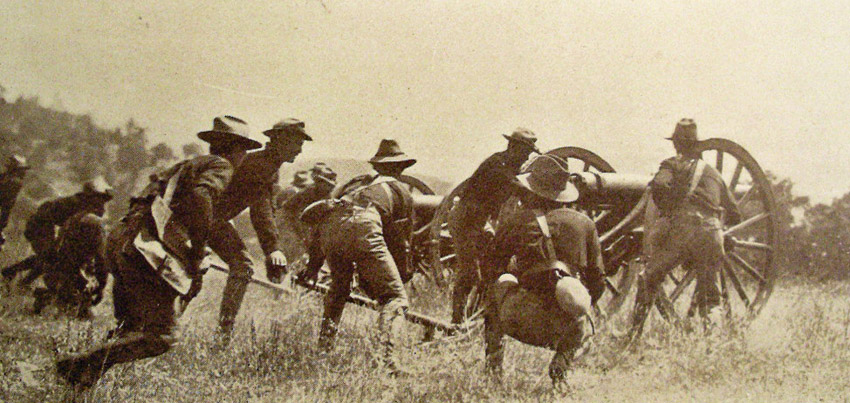
At the battle of Bud Bagsak, the Moro warriors were attacked by Americans led by General John Pershing. The Moros, known as Berserkers, were not afraid to rush the American forces.
Pershing once wrote to his wife, “The fighting was the fiercest I have ever seen. They are absolutely fearless, and once committed to combat they count death as a mere incident.”
Americans carried M1897s into this fight. There weren’t the famed trench guns, but merely 1897s with 28-inch barrels. In this fight, the M1897s proved to be absolute man-stoppers.
The charging Moro warriors weren’t always successfully stopped by the .30-06 Springfield or handgun rounds. Reportedly the M1897 stopped them quickly, and with the buckshot and chokes at the time, the spread was likely wide and made hitting moving targets easier than rifles or handguns.
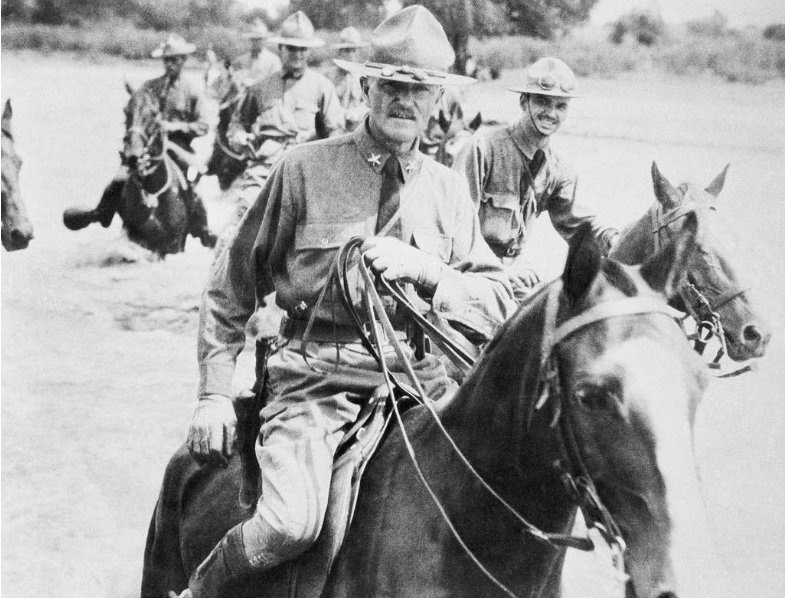
Noting its effectiveness, Pershing later had some of his soldiers carry the gun into Mexico when chasing Pancho Villa.
World War I
General Pershing was made the Commander of the American Expeditionary Force as the United States entered World War I.
The trench warfare fought here is where the combat shotgun became a star.
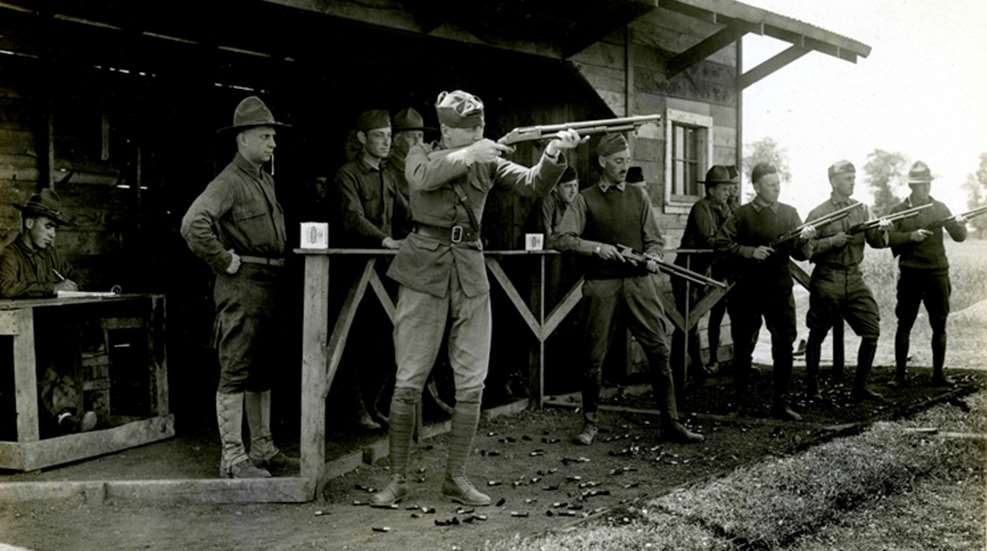
Americans were the only military force to bring shotguns to war, and that force was commanded by a man who knew their value.
The rifles at the time were typically big bolt actions, chambered in powerful calibers—not great weapons for close-quarters combat.
In addition to the soldiers’ melee weapons, they had the M1897 in its trench gun configuration. This weapon wore a perforated steel heat shield and bayonet lug to accommodate the M1917 Sword bayonet.

At close range, six rounds of 00 buck wreaked havoc against enemy forces armed with cumbersome bolt actions. The M1897 lacked a disconnector so troops could hold down the trigger and actuate the pump to slamfire the gun rapidly.
It was a fearsome weapon but was hampered by paper cartridges. Trench warfare was brutal, dirty, and often wet. These conditions would cause shotgun shells to swell, break, and fail.
Potential Warcrimes
Despite this, the shotgun was effective enough to warrant the famed protest issued by the German Government.
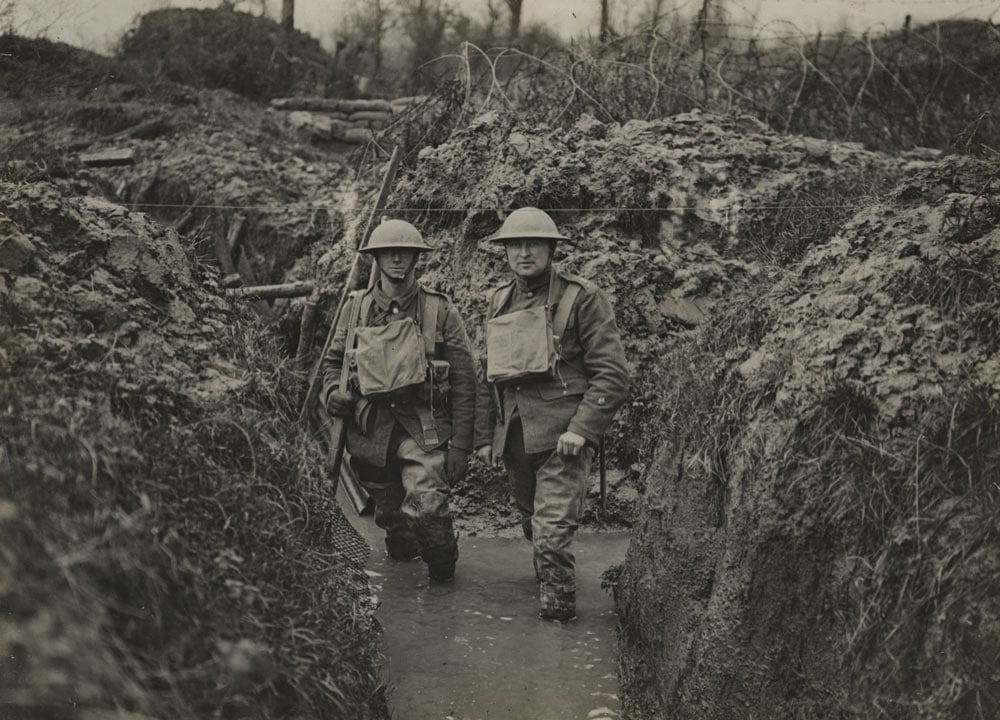
“The German Government protests against the use of shotguns by the American Army and calls attention to the fact that according to the law of war, every U.S. prisoner of war found to have in his possession such guns or ammunition belonging thereto forfeits his life. This protest is based upon article 23(e) of the Hague Convention respecting the laws and customs of war on land. Reply by cable is required before October 1, 1918.”
The Americans replied…
“The Government of the United States notes the threat of the German Government to execute every prisoner of war found to have in his possession shotguns or shotgun ammunition. Inasmuch as the weapon is lawful and maybe rightfully used, its use will not be abandoned by the American Army. If the German Government should carry out its threat in a single instance, it will be the right and duty of the United States to make such reprisals as will best protect the American forces, and notice is hereby given of the intention of the United States to make such reprisals.”
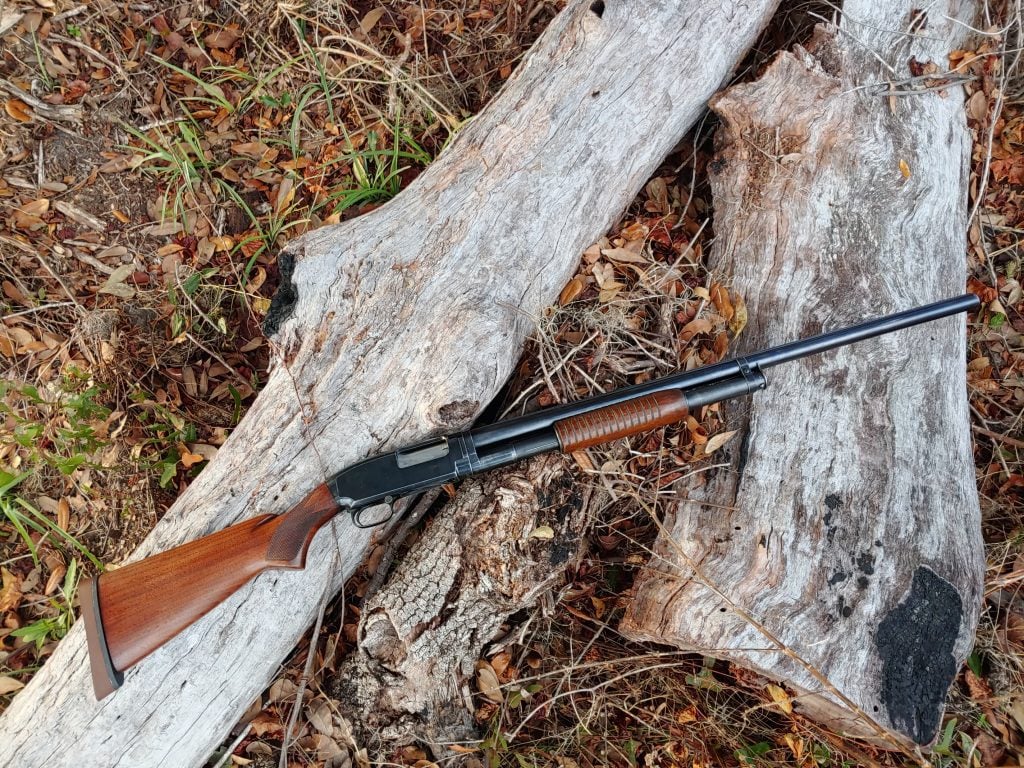
The M1897 wasn’t the only trench gun in combat.
The second most popular was the Winchester M1912, an internal hammer pump-action shotgun that also featured a heat shield, a bayonet., and had slamfire capabilities.
Remington also provided the Model 10-A, of which 3,500 were ordered for World War 1. This gun used a bottom ejecting design that would likely allow less debris to enter the gun than other shotguns.
It had a bayonet lug and a wood handguard because Winchester patented the steel heat shield.
World War II
By the time World War II came around, the shotgun was no longer an American secret.
Multiple countries had adopted shotguns by the time the Nazis came knocking, including the U.K., Brazil, India, Denmark, France, and of course, the United States.
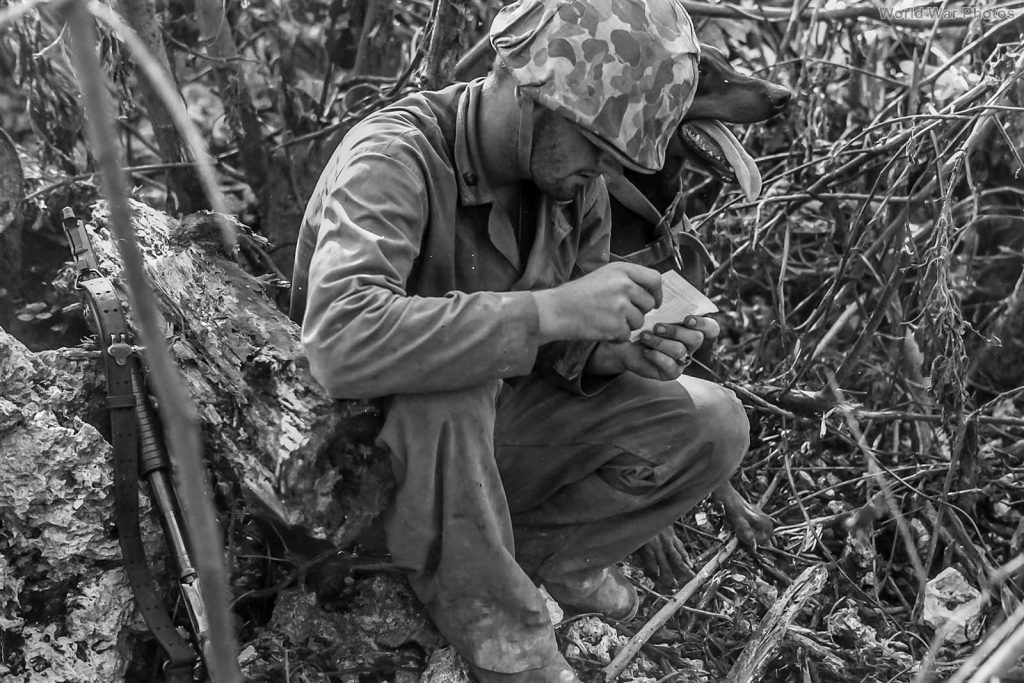
Predictably the two most popular shotguns of World War II were the Winchester M1897 and M1912. The M1912 was the standard-issue shotgun of the U.S. Army.
World War II saw the advent and adoption of semi-auto combat shotguns, like the Browning A5 and Remington 1911 (an A5 clone). These were relatively uncommon but available.
Pump-action shotguns like the Remington M1931, the Stevens M520-30, and even the Ithaca 37 helped supplement a shotgun shortage as America went once more into the breach of World War.
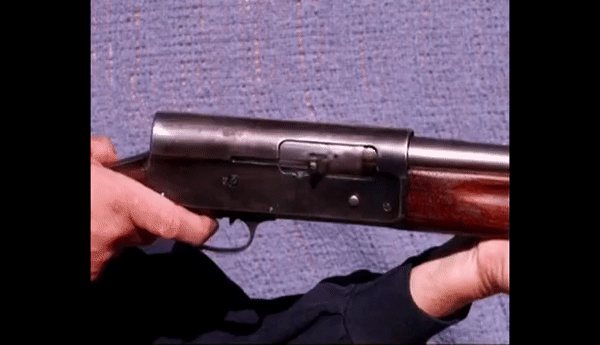
While they were all different guns, they had a lot in common. They were shortened variants of sporting guns, utilized the 12-gauge round, and were all pump-action shotguns.
The pump shotgun still reigned supreme, especially among Marines in the pacific.
Marines did not have the M1 Garand and Thompsons and instead were armed with the sub-optimal Reising submachine guns and Springfield bolt action rifles.
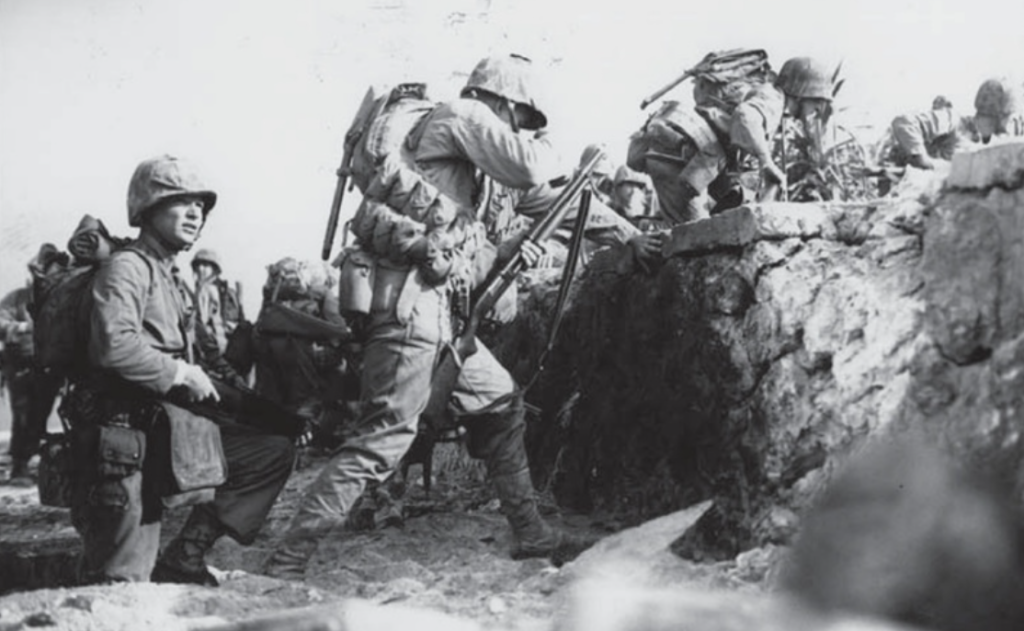
Jungles were often crowded with little visibility, and Marines could quickly find themselves in a close-range fight. Shotguns offered the dispersal of lots of lead relatively fast in an ambush situation
Vietnam Shotguns – The Fortunate Son
Vietnam was a long conflict, and in the beginning, it wasn’t uncommon to see Marines and Soldiers wielding the same guns their fathers and grandfathers used in World War I and II.

Shotguns used in Vietnam included the M1897, Model 1912, Ithaca 37, Remington Model 10, Model 31, and the Stevens Model 77E.
The Stevens Model 77Es is the forgotten combat shotgun of the United States. With over 77,000 sent to Vietnam, it was the most used shotgun in Vietnam.
The 77E was a pump-action shotgun designed to be shorter and handier to accommodate the smaller South Vietnamese soldiers.
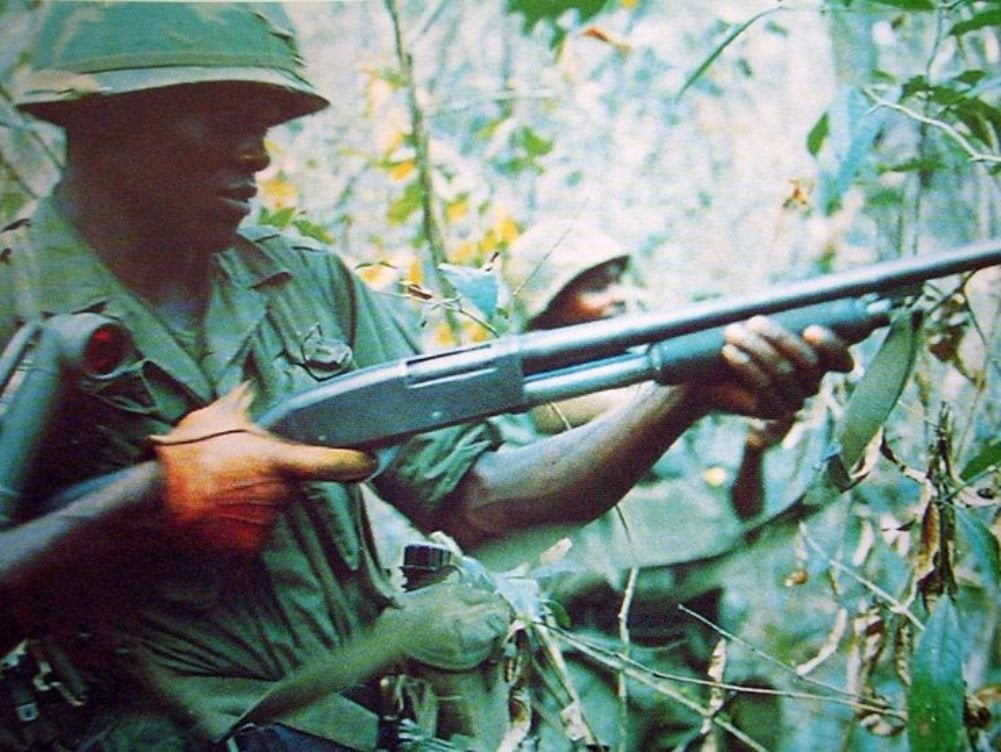
The Ithaca 37 proved popular due to its bottom loading and ejecting port. No side port meant less junk got into the action, which helped keep the gun reliable.
The newly formed SEALs experimented with several different ideas for combat shotguns, like the Remington Model 7188 — a select-fire 12-gauge shotgun that could fire in fully automatic mode. It was insanely destructive but unreliable, so it didn’t last long.
Another SEAL idea was the duckbill choke which would spread the shot horizontally. The idea was to increase a shotgun’s hit potential when fired at chest height. However, the chance of hitting two bad guys required a specific set of very unlikely circumstances.
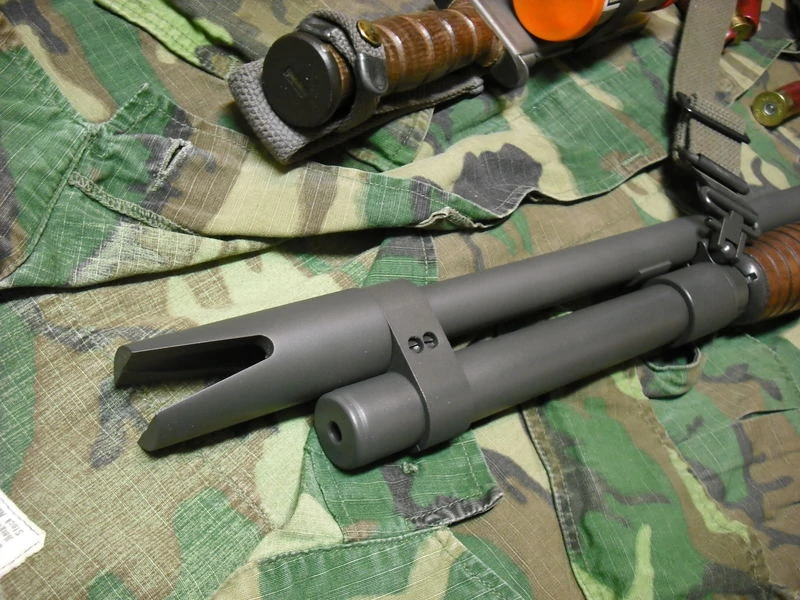
It’s also worth mentioning that Vietnam was the first time the Remington 870 saw action. The 870 utilized dual action bars that greatly improved the durability and reliability of the gun.
The Remington 870 would go on to be one of the most successful pump-action shotguns of all time and has continually seen service since.
Prices accurate at time of writing
Prices accurate at time of writing
-
25% off all OAKLEY products - OAKLEY25
Copied! Visit Merchant
Like the pacific campaign, the jungles of Vietnam had terrain that allowed the shotgun to shine.
In the tight jungles and urban settings, the shotgun worked well. However, as the M16 saw adoption, the shotgun began to fall out of favor.
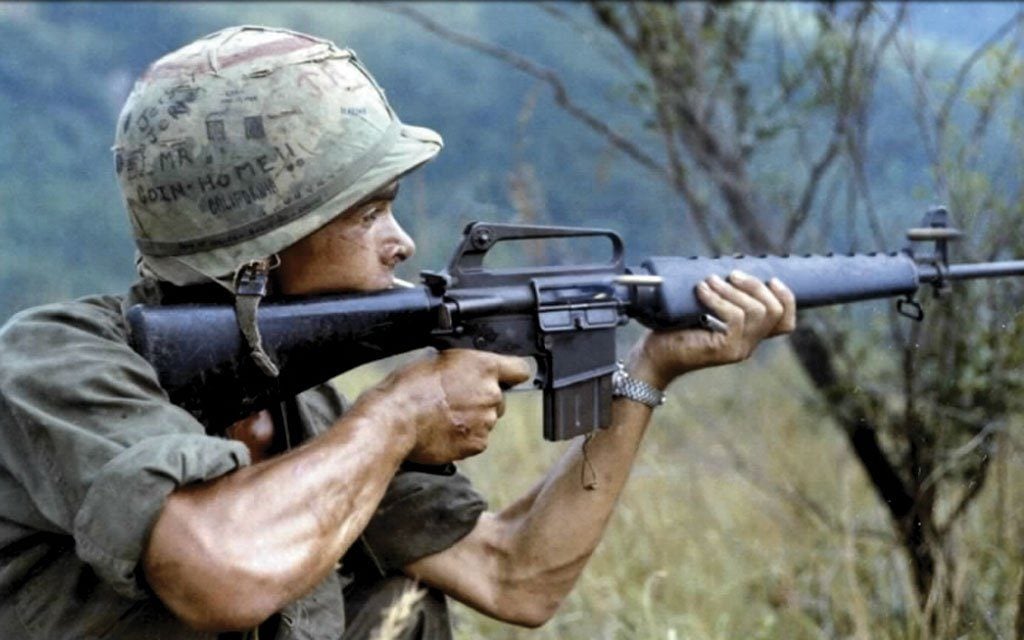
The Global War on Terror
Shotguns were always niche weapons, but as rifles got shorter, lighter, and easier to use, the shotgun’s role shrunk even more.
In the Global War on Terror, shotguns were relatively rare but still saw service and combat across the GWOT.
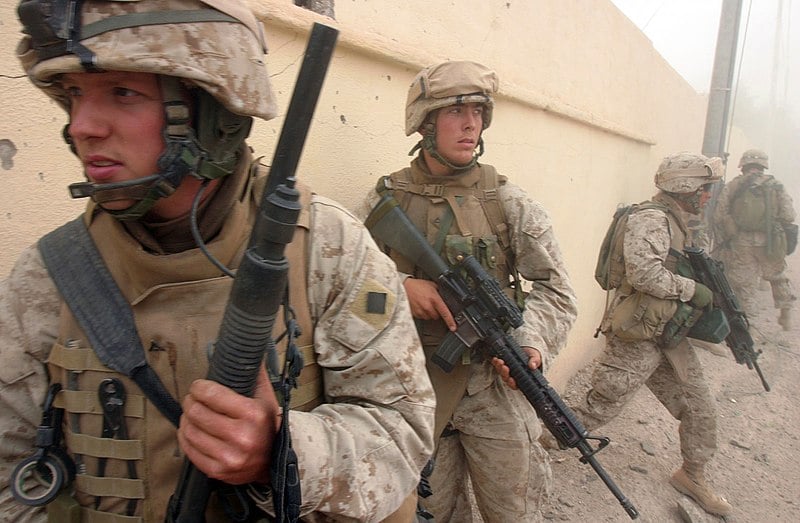
The most common shotgun in the GWOT was the Mossberg 500 series — specifically the Mossberg 500 MILS and the 590A1. These shotguns descended from the Remington Model 31 and brought a high level of durability and simplicity to the field.
The Mossberg shotguns famously passed the U.S. Army’s Mil-Spec 3443E test, which involved drops, falls, and 3,000 rounds of buckshot.
Prices accurate at time of writing
Prices accurate at time of writing
-
25% off all OAKLEY products - OAKLEY25
Copied! Visit Merchant
The 590A1 model features a thick-walled barrel, a bayonet lug, a metal trigger group, and an extendable magazine tube. This thing is an absolute tank of a fighting weapon.
On top of the Mossberg 500, the Remington 870 continued to see action. The 870 Modular Combat System, or 870 MCS, provided a modular shotgun that users could easily modify to suit specific tasks.
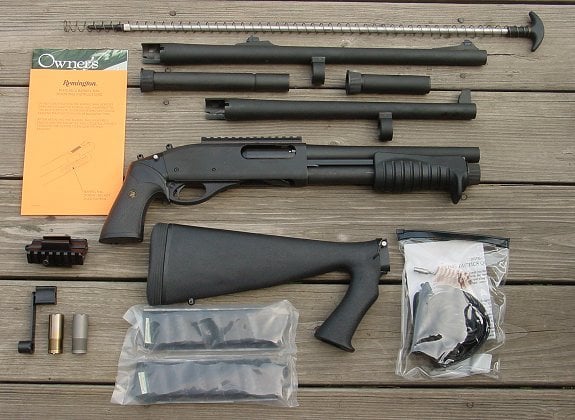
It could be a standard fighting shotgun with a fixed stock and an 18-inch barrel, or you could toss on a shorter 14-inch barrel with a collapsing stock for CQB.
Need to breach a door? Simply swap to the 10-inch barreled pistol grip-only configuration.
Beyond Pump Actions
In 1999 the Marine Corps led the journey to find the newest fighting shotgun for the military forces. This concluded with the adoption of the gas-operated, semi-automatic Benelli M4.
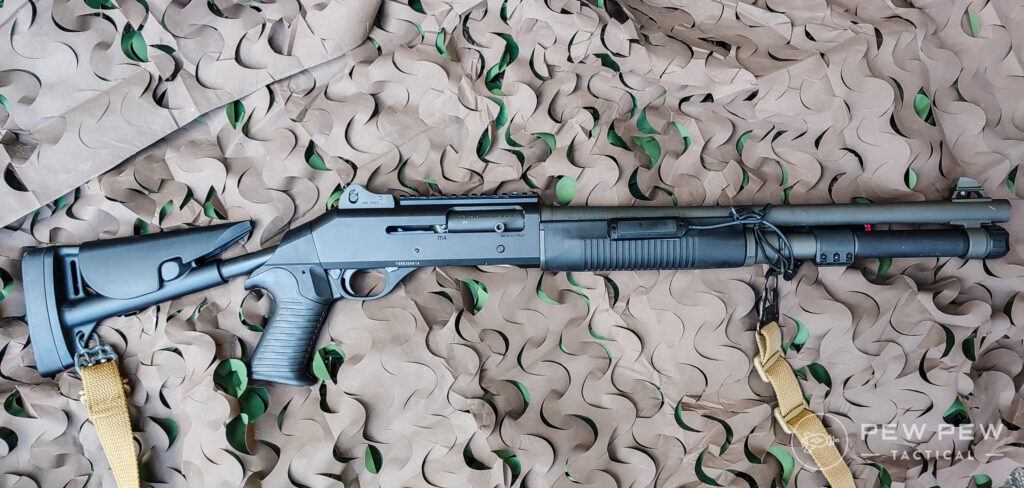
The M4, under the military designation M1014, packed seven rounds of 12-gauge and allowed users to rapidly engage multiple targets.
There is no dispute that the M1014 is the current king of military combat shotguns. The M1014 saw heavy use in Iraq, proving reliable in the worst conditions.
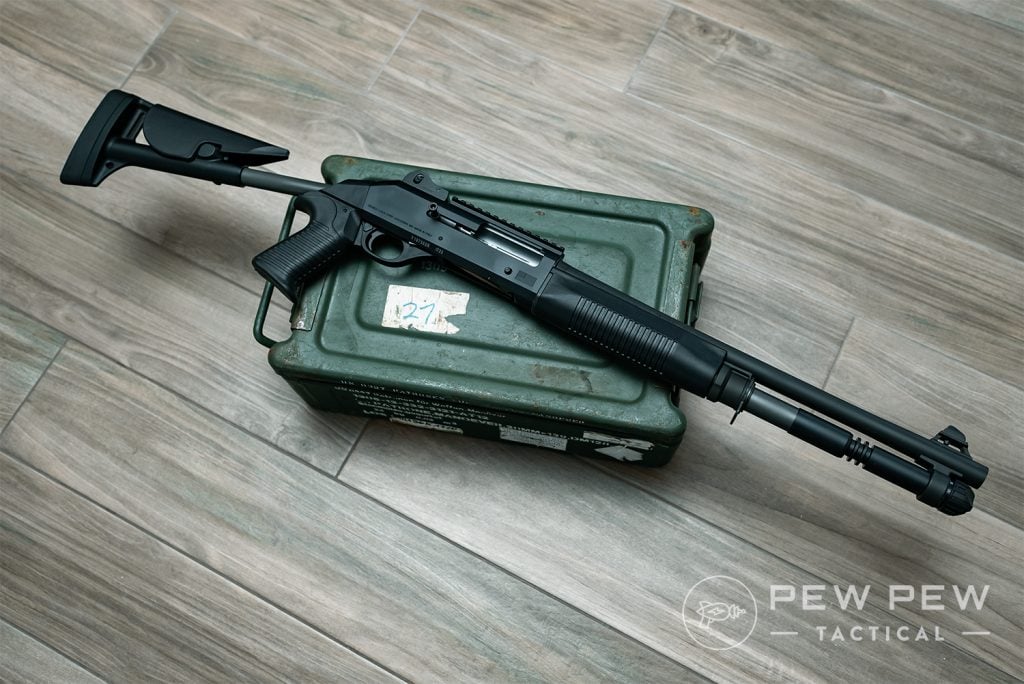
In the streets of Fallujah, it was tough to find a better weapon for the close, urban fighting experienced there.
Prices accurate at time of writing
Prices accurate at time of writing
-
25% off all OAKLEY products - OAKLEY25
Copied! Visit Merchant
Additionally, the U.S. Army developed the M26 MASS shotguns. These were designed to work as both under-barrel shotguns mounted to an M4 and as standalone weapons.
They are magazine-fed shotguns that use a straight-pull bolt.
They are better suited for breaching than combat due to the straight-pull design. It’s a bit slower than a pump-action and a helluva lot slower than the M1014. Still, the M26-MASS was a limited-issue item that saw some use in Iraq and Afghanistan.
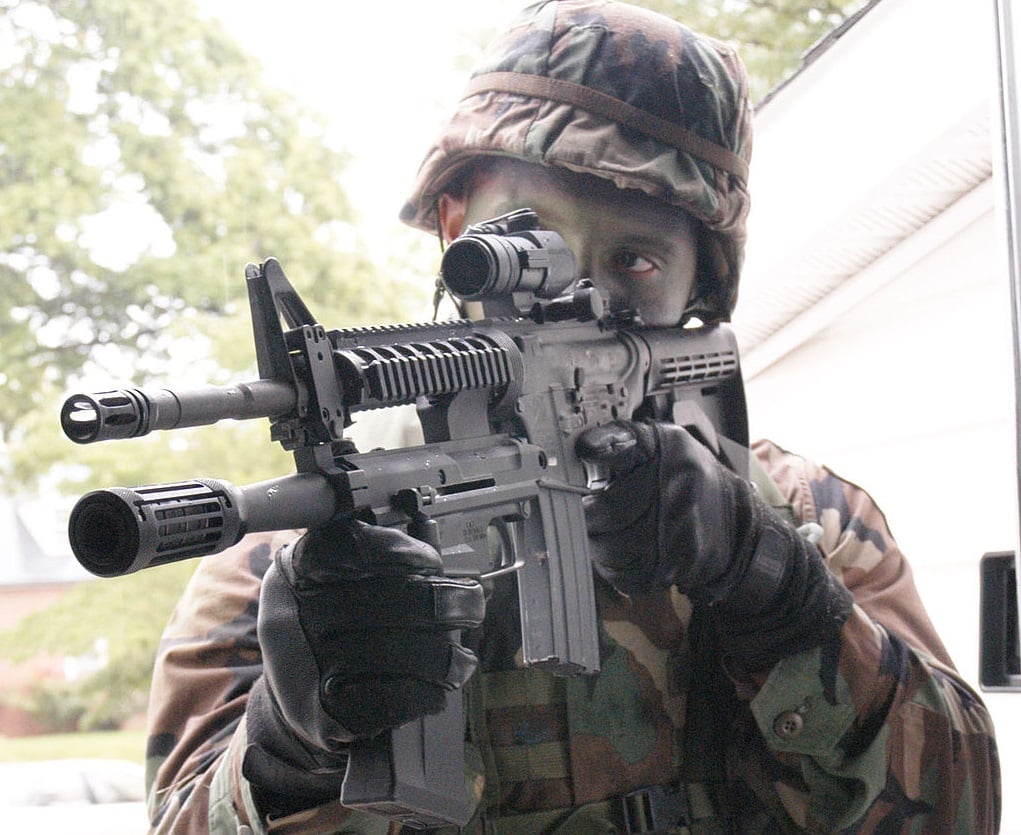
Leading up to and during the GWOT, shotguns became seen more as breaching tools rather than combat weapons.
Although shotguns are effective in both roles, modern rifles have eaten away at the shotgun’s role as a go-to combat weapon.
Final Thoughts
Combat shotguns are niche weapons and always have been. They’ve never been the king or queen of combat weapons, but they remain devastating in close quarters and can peel doors off of hinges when necessary.
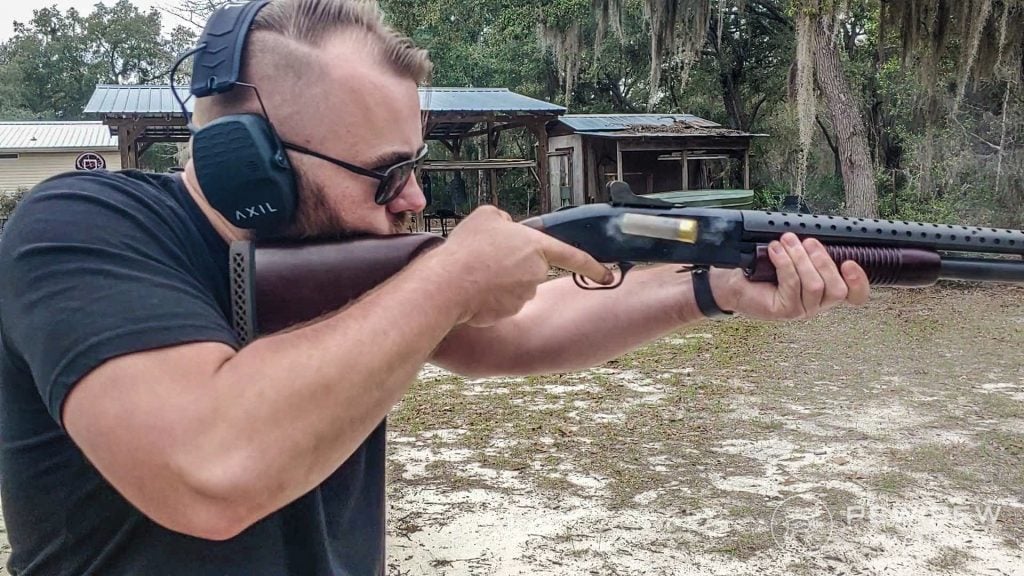
It’s tough to beat the up-close firepower a shotgun offers, and while their niche might remain small, shotguns are still fascinating and useful weapons.
I tried to cover the most prevalent of each time period, but I know I’ve missed some. Let us know your thoughts in the comments below! Don’t forget to check out our hands-on article on the 9 Best Home-Defense Tactical Shotguns!

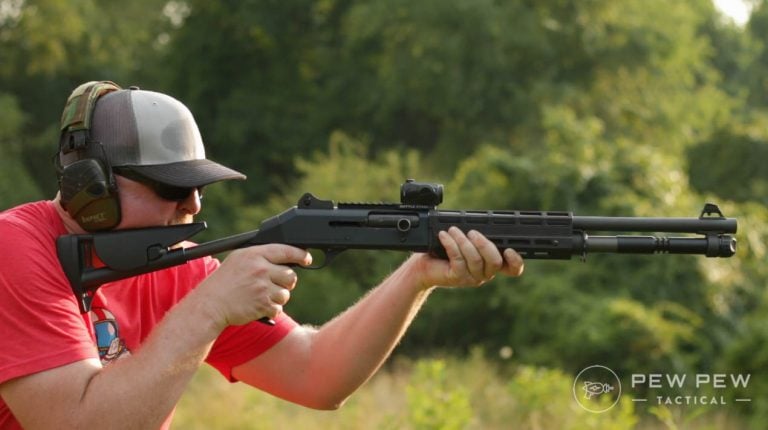
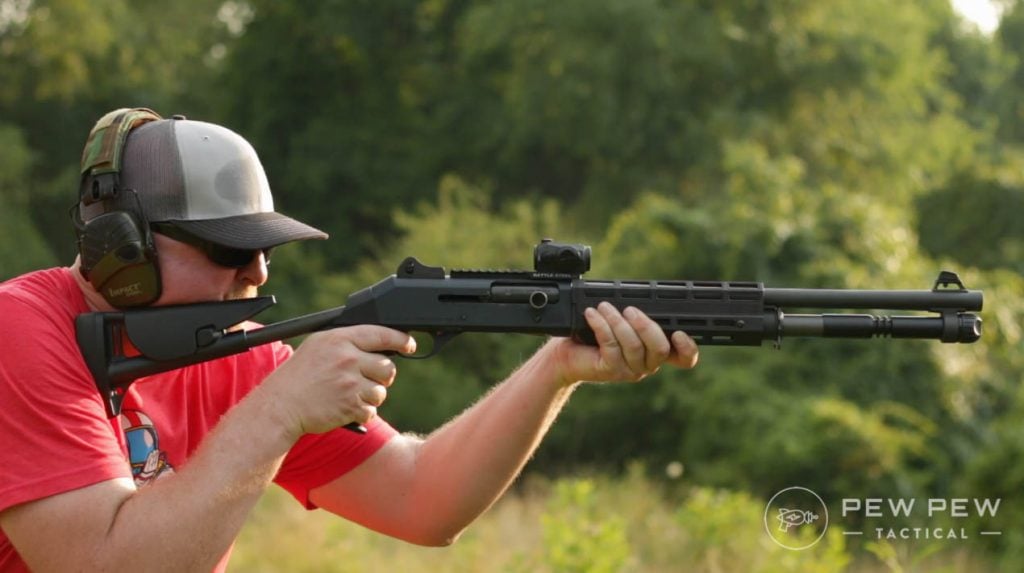










3 Leave a Reply
Appears that florida might be considering banning attachments on long guns.
A pretty thorough history I'd say Travis. We know earlier muzzle loaded shotguns were used both in the State's and across the pond, but the texts are spotty as far as how many were issued and in what roles they were used, so that's not a fault I'd call out. Back then, as they are still to this day, range of the projectiles has always been a limiting factor. Buck and Ball was as far as one could get, and smoothbore muskets and shotguns just weren't that accurate, as they were limited by the technology of the day.
You hit every major conflict that I was aware of, and as an amateur historian focused on arms development from 1830s to the 1920s, I can find no fault in your history (that period as firearms transitioned from Flintlock to percussion cap and then the brass cartridge, as well as Firearms going from single shot to repeating weapons is the greatest leap forward of technology in firearms history IMHO).
Thanks you and keep up the good work.
I really dislike that the Army stepped away from the Mossberg pump shotgun. They should've made it more compact instead of adding the weight to M4. I wrote the first lesson plan for the M26 back in 2017 at Ordnance Schoolhouse at Ft. Lee Virginia for Army & Marines recruits to be instructed on this conventional weapon system. The magazine approach doesn’t fit the tactic of keeping weapon system small military operations on battlefield. Keep as an individual breaching tool or MP weapon for prisoners. I still have to add the 590a1 to complete my Mossberg pump inventory.
ARMT 4 Peace!!!